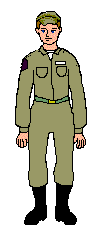Current Affairs
CURRENT AFFAIRS AND BACKGROUNDERS : INTERNAL CONFLICT IN SOUTH SUDAN
Internal conflict in South Sudan may refer to:
Ethnic violence in South Sudan began as part of the Sudanese nomadic conflicts, continuing since January 2011.
The fighting continued throughout the transition process for South Sudans independent government.
More than a month following South Sudans independence and secession from Sudan, the fighting escalated after several cattle raids took place during ongoing clashes between the Murle and Lou Nuer, at farms in South Sudans Jonglei state, killing up to 600 people and injuring up to 985, on 18 August 2011. The clashes took place when members of the Murle group are said to have attacked the majority Lou Nuer, stealing nearly 40,000 cattle. The death toll was originally reported to be as low as 58, but the United Nations said the flow of information had been hampered by vast distances and poor logistics The UN also said that there was a possibility that as many as 200 people had been abducted. By January 2012, clashes including and stemming from the August cattle raid had left more than 1,100 dead in the region, according to the UN.
Fighting further intensified in late December 2011 and early January 2012 as the Nuer White Army, an armed group of Lou Nuer tribesmen, attacked Pibor and surrounding Murle villages in retaliation for the August 2011 cattle raid. The UN estimated between 20,000 and 50,000 were displaced as a result of the fighting.
The South Sudanese Civil War was a conflict in South Sudan between forces of the government and opposition forces. In December 2013, a political power struggle broke out between President Kiir and his former deputy Riek Machar. Fighting broke out between the SPLM and the SPLM in opposition, igniting the civil war. Ugandan troops were deployed to fight alongside South Sudanese government forces against the rebels. In January 2014 the first ceasefire agreement was reached. Fighting still continued and would be followed by several more ceasefire agreements. Negotiations were mediated by IGAD (which includes the eight regional nations called the Intergovernmental Authority on Development as well as the African Union, United Nations, China, the EU, USA, UK and Norway). A peace agreement known as the Compromise Peace Agreement was signed in Ethiopia under threat of United Nations sanctions for both sides in August 2015. Machar returned to Juba in 2016 and was appointed vice president. Following a second breakout of fighting within Juba, Machar fled again and went to exile in the Sudan.
Up to 300,000 people are estimated to have been killed in the war, including notable atrocities such as the 2014 Bentiu massacre. Although both men have supporters from across South Sudans ethnic divides, subsequent fighting has had ethnic undertones. Mr. Kiirs Dinka ethnic group has been accused of attacking other ethnic groups and Mr. Machar Nuer ethnic group has been accused of attacking the Dinka. More than 1,000,000 people have been displaced inside South Sudan and more than 400,000 people have fled to neighbouring countries, especially Kenya, Sudan, and Uganda, as a result of the conflict


